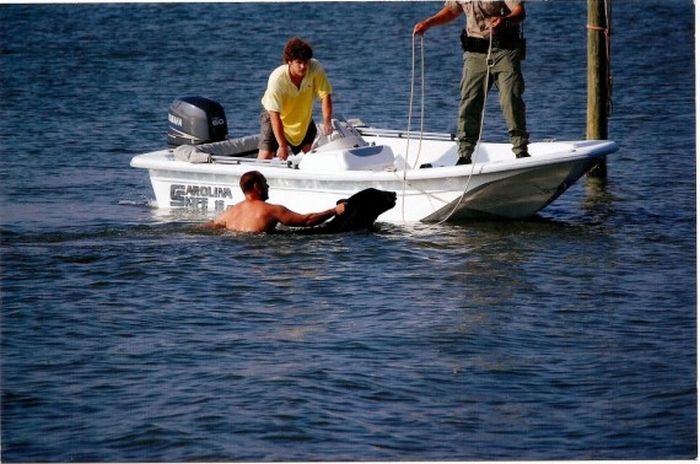|
|
Saving A Bear From Drowning
|
The raccoon-sized, dog-like Cephalogale is the oldest-known member of the subfamily Hemicyoninae which first appeared during the middle Oligocene in Eurasia ~30 Ma ago. The subfamily also includes the younger genera Phoberocyon (~20-15 Ma), and Plithocyon (~15-7 Ma).
A Cephalogale-like species gave rise to the genus Ursavus during the early Oligocene (30-28 Ma); this genus proliferated into many species in Asia and is ancestral to all living bears. Species of Ursavus subsequently entered North America together with Amphicynodon and Cephalogale during the early Miocene (21-18 Ma).
Members of living lineages of bears diverged from Ursavus ~20 Ma ago, likely via the species Ursavus elmensis. Based on genetic and morphological data, the subfamily Ailuropodinae (pandas) was the first to diverge from other living bears ~19 Ma ago, although no fossils of this group have been found pre-dating about 5 Ma.
The New World short-faced bears (Tremarctinae) differentiated from Ursinae following a dispersal event into North America during the mid Miocene (~13 Ma). They invaded South America (~1 Ma) following formation of the Isthmus of Panama. Their earliest fossil representative is Plionarctos in North America (~10-2 Ma). This genus is probably the direct ancestor to the North American short-faced bears (genus Arctodus), the South American short-faced bears (Pararctotherium and Arctotherium), and the spectacled bears, Tremarctos, represented by both an extinct North American species (T. floridanus), and the lone surviving representative of the Tremarctinae, the South American spectacled bear (T. ornatus).
|
|









